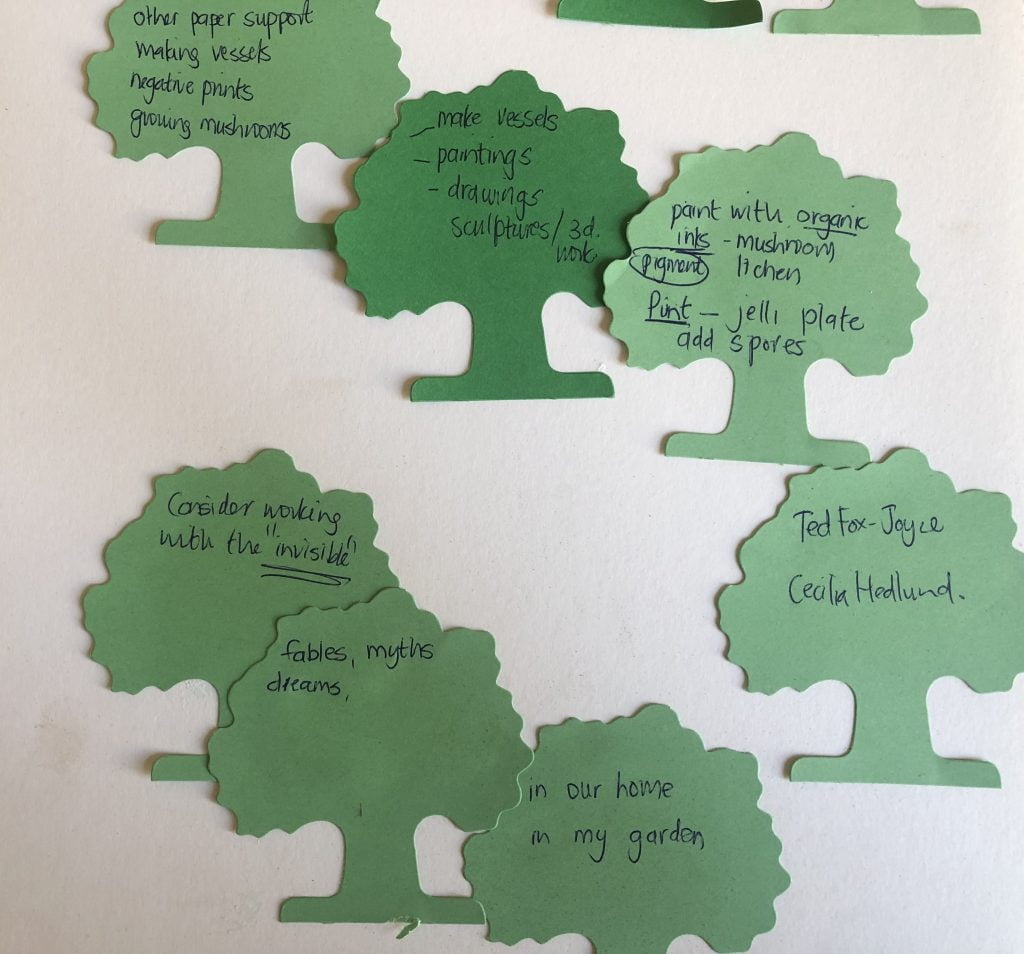Selection of most useful work
The first work I select is a feather installation. This making process opened up ideas to work in 3d and explore site-specific work. I showed the work at a local art exhibition in April 2023 and placed a painting behind it. I think a lot of work with chance happened in this work, my intentionality was to create a form with hanging feathers. I had no idea how to translate a drawing into a 3d hanging object and really had to spend time thinking about how to get my idea into a physical hanging form. I had been experimenting with different types of string and how feathers would hang from 2m or higher. Thin cotton thread and fishing gut with small sinkers to hold the feather down, did not seem the correct choice. I visited a bead shop and bought silk string and small pearls and started experimenting with hanging and attaching these. I brainstormed with my OCA student group and was encouraged to make a big ‘mobile’. I sourced a sheet of wood from my husbands’ carpentry workshop and transferred a feather drawing onto it, and started drilling holes. I placed a drawing on the floor and started threading the feathers through the holes in the board. I realized by now that this task was huge (time-consuming and labor-intensive) and the risk of not reaching my expected shape/feather form was very real. I had to collect at least 300 white feathers and clean them before use. I find that a bigger pearl worked easier to thread the shaft of the feather through it. By the time I committed to the local art exhibition, the feather installation was not very well conceptualized, and I could not share a visual with the curators, only an idea. The fact that I created the work in my studio and then hung it at the venue was a big concern. The venue was not available till 2 days before the exhibition. Transporting the work proved a huge risk – almost a failure, as I had to roll up all the feathers and drive to town, half of this road is gravel (8km). The risk of the strings moving around on the ‘scoreboard’, became a reality as I did not tape it down well enough. I had many entanglements and it took almost 10 hours to hang and entangle the work. In this process, I learned that materials can also behave in random ways – like when rolling it up and then unwinding caused other reactions, like entangling. Care and maintenance became the focus during the exhibition – as I did not mind that viewers interact with the work, like moving inside the curve of the installation and taking photos of them ‘inside’ it, or blowing onto it. These are external factors that I would say also ‘rewarded me (and the viewer) with random results. Responses from viewers varied from admiration for my patience and courage, to comments which indicate to me that the work did touch on feelings and inner reflections. There was also an interesting discussion about how I collected the feathers and an inquiry about the one pink (flamingo) feather. This was gifted to me by one of the other artist on the day the exhibition opened. I replaced a white feather with it. Image 4 shows the work rolled up in my studio, before taking it to the exhibition space.
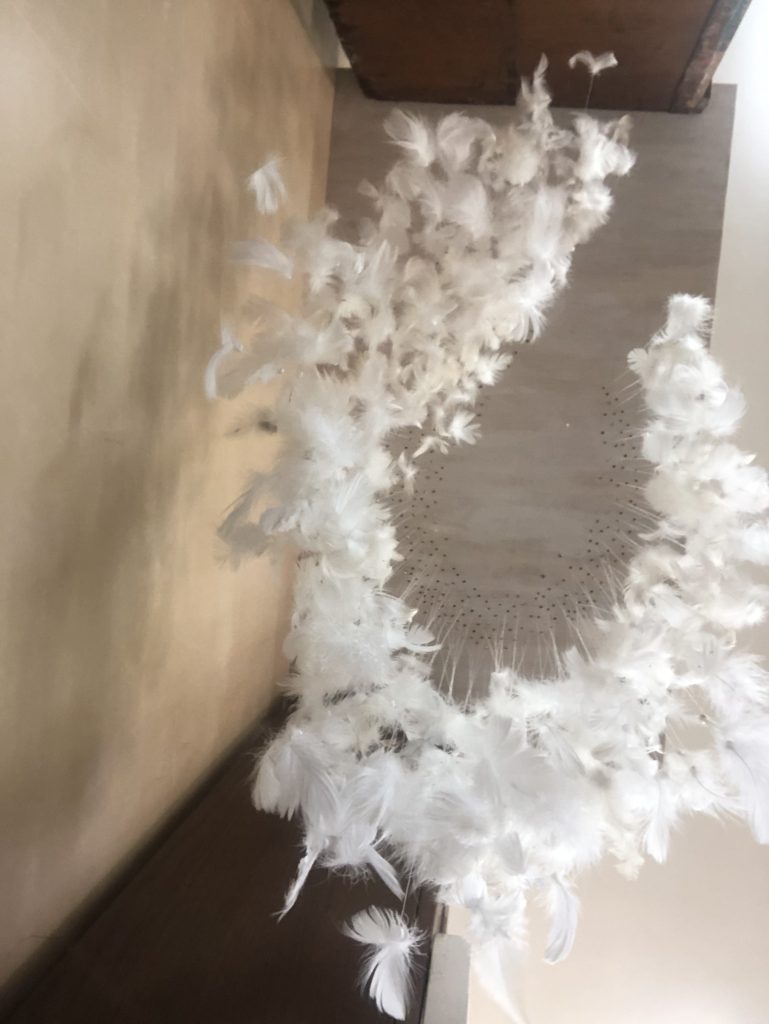
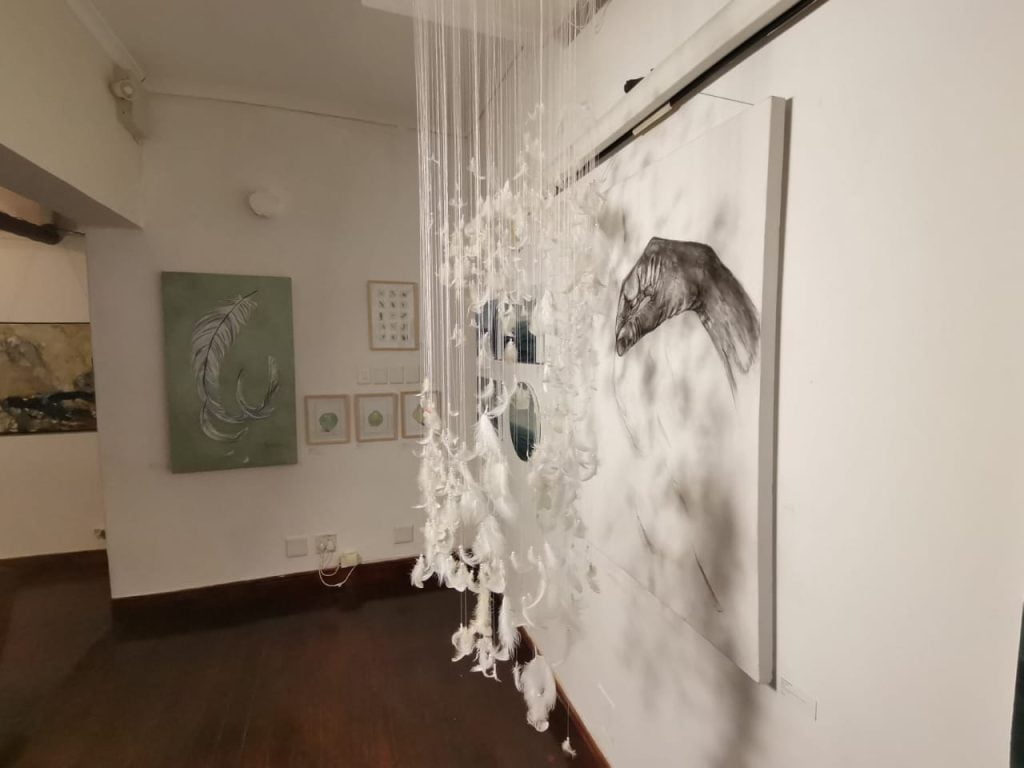
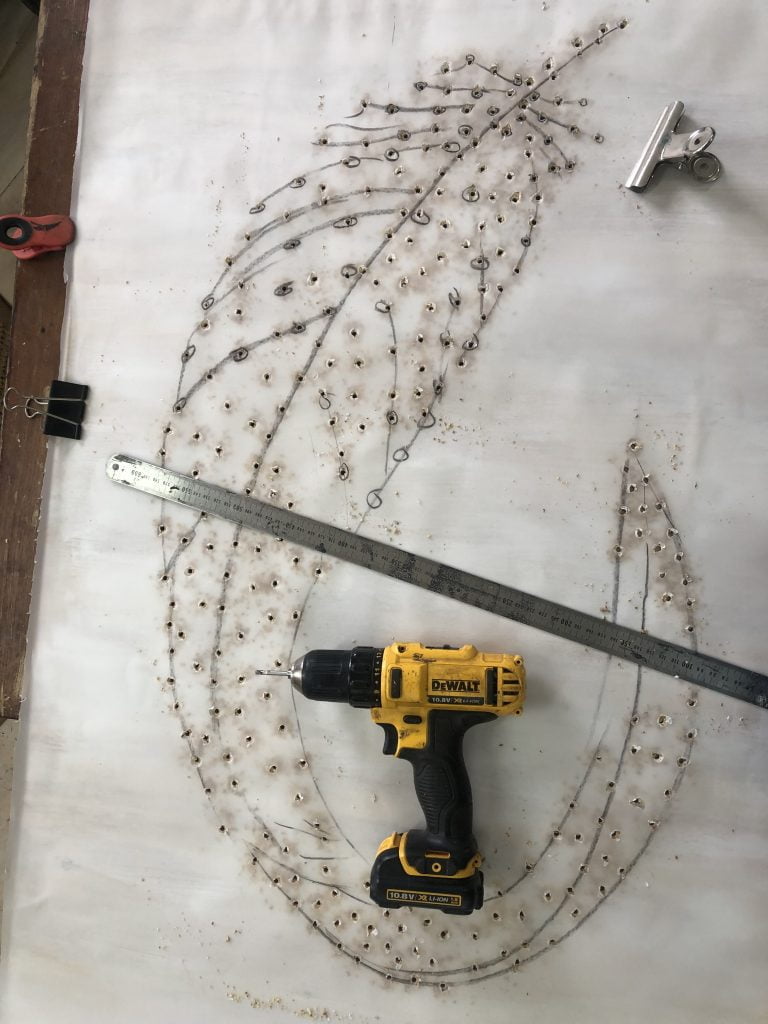
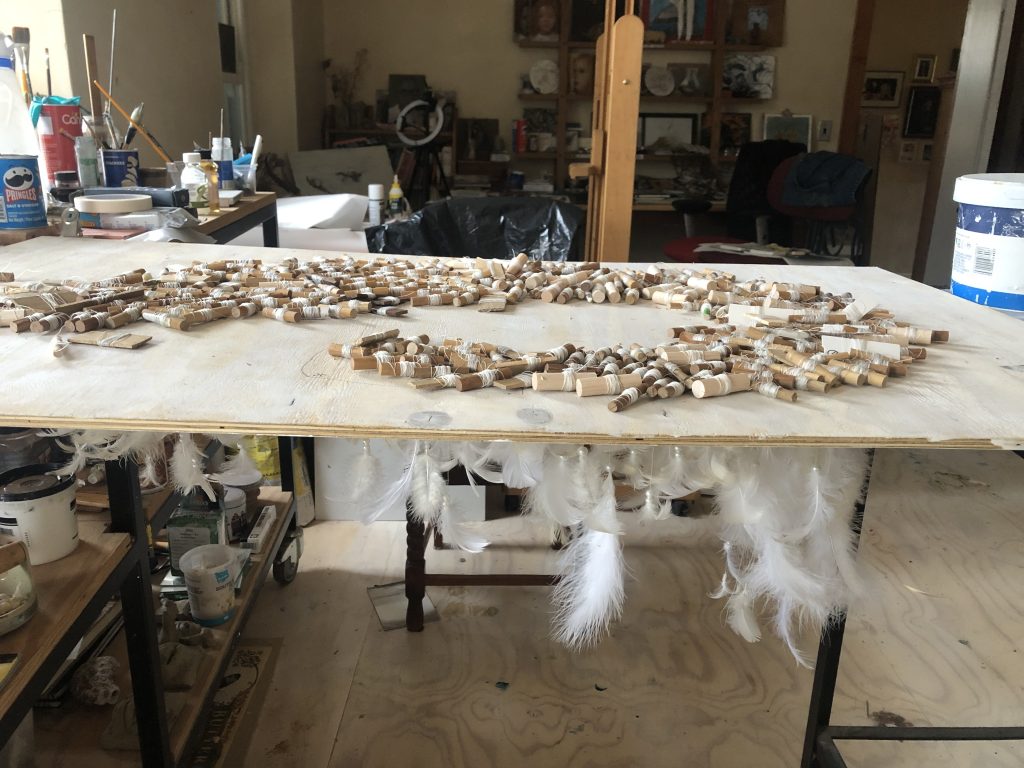
Painting the Moon Jars lead to considering vessels and exploring 3d making and deepening the conversation around kinship and the meaning we attach to objects when going through difficult times. In making the work I was aware of not being able to create a perfect shape, and being comfortable with the beauty in imperfection and showing my hand in the work. I showed them as 3 framed paintings at an exhibition ( ArtUnlocked, Riekeekvalley: 22 & 23 April 2023). I am grateful that one of these works was sold. I explored making small drawings in charcoal and looked at how they could be viewed as a series, by framing them together. I titled it, Untold Stories, and shared with viewers that translucency was contemplated in the drawings, this made me aware of the many hidden signs of depression and kindness.
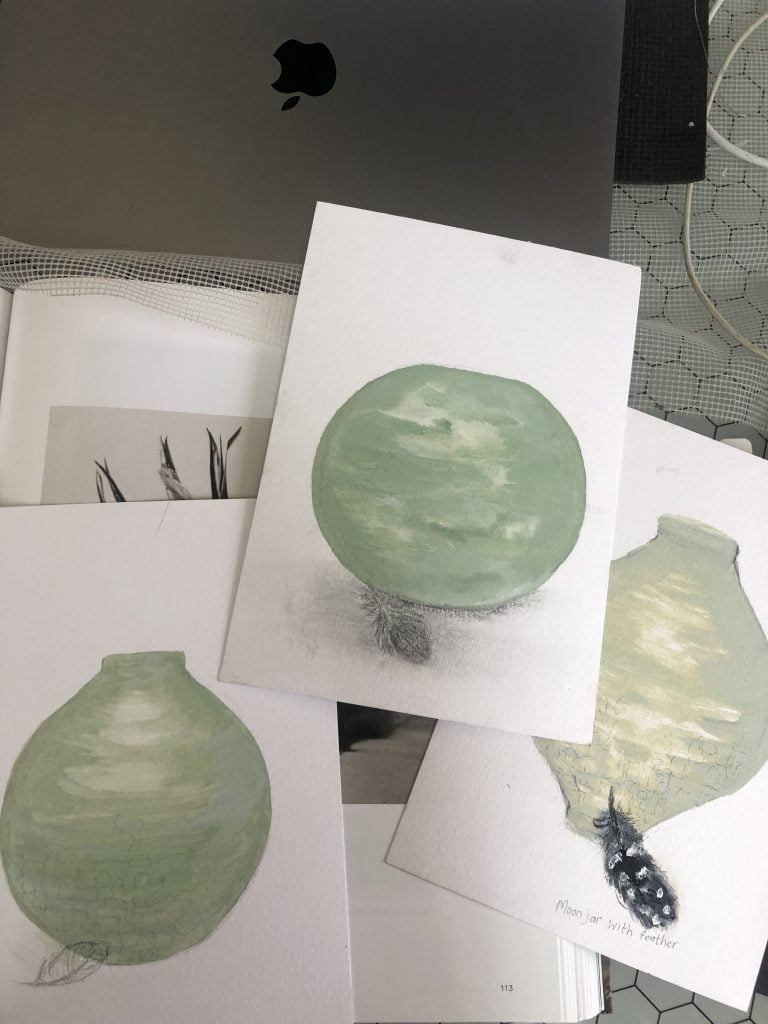
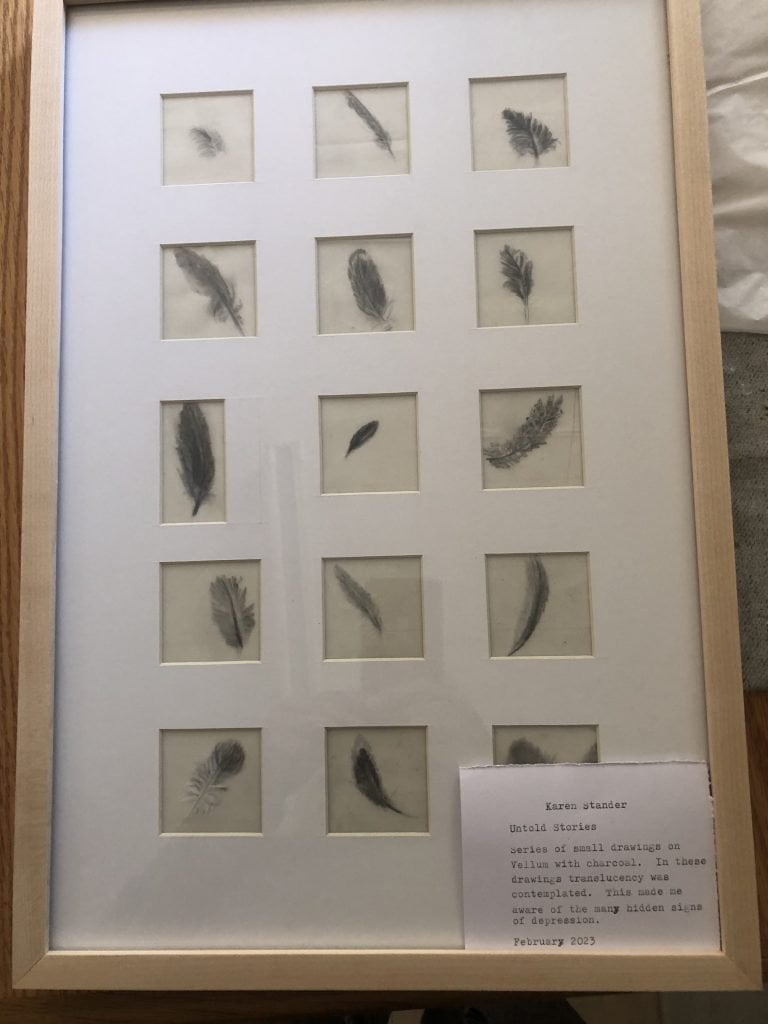
I showed small abstract works and think the work opens up personal stories to viewers. In these works I used feathers as a drawing tool and worked with mushroom ink, some had mushroom spore prints as well. I feel I was able to connect the avian with the fungus as a story about interconnectivity, but also share the ephemeral qualities of these objects. I would consider making bigger abstract works for my BOW. The works below are A4 size.

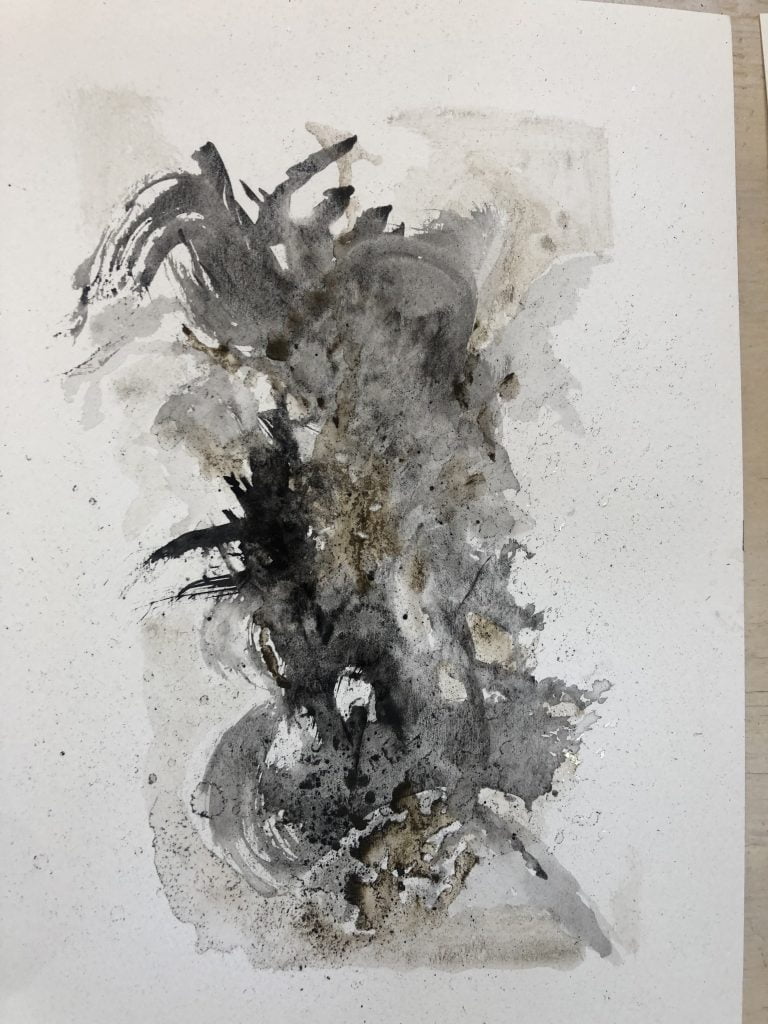
Discussing where they impacted the development of my body of work made me aware that I can explore these interactions between the works in terms of scale, texture, and painting/drawing mediums. I am not sure about how to use color, or if I even want to explore color in this BOW.
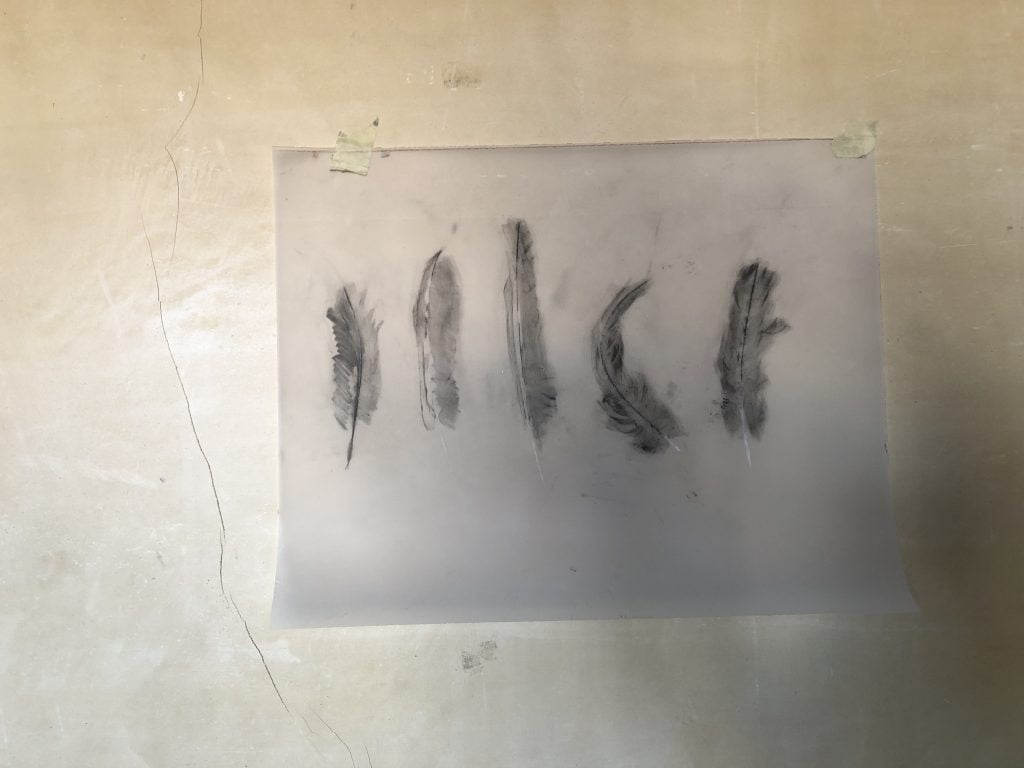
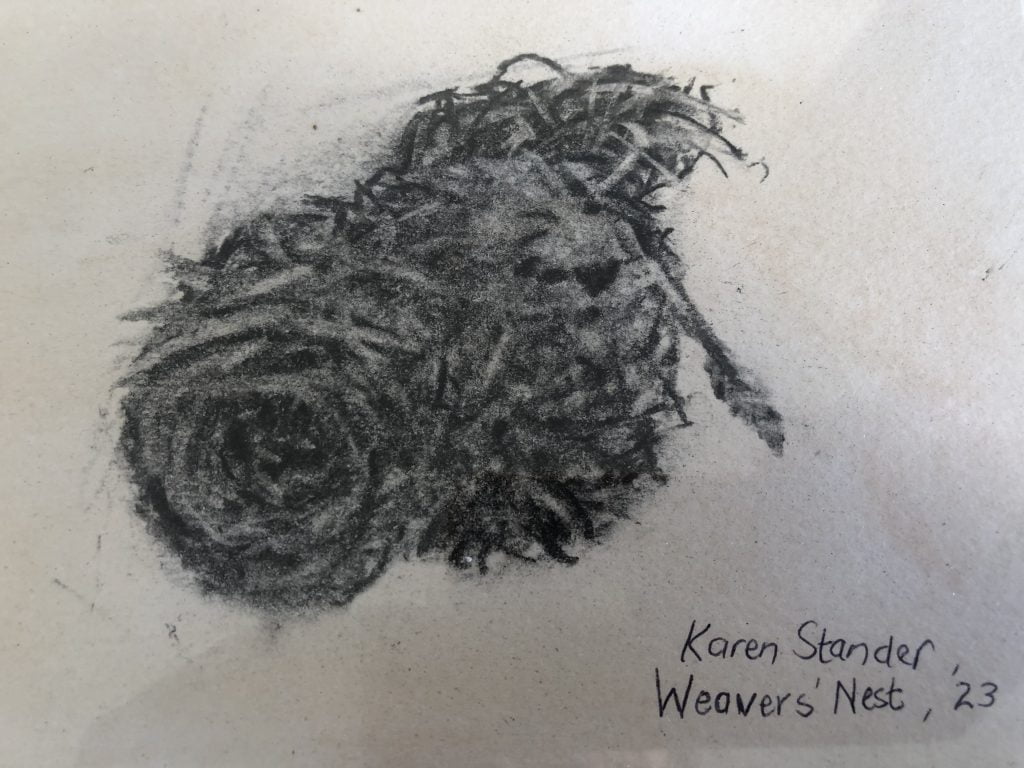
List of images
Reflective commentary on failure, risk, and chance
I would think that my personal circumstances and life have made me more aware of the instability, uncertainty, and fleetingness of life, and it was easy to let it into my making and become part of some of the underlying themes within my work.
Below is a very interesting happening I observed whilst making spore prints with mushrooms I foraged. On the spore print image the mushroom looks as if it collapsed and is completely depleted after the spores were dropped. When I removed the mushroom the gills were gone – the mushroom is hollow., but still very pungent mushroomy smell that is left behind. I later read that this is called ‘bleeding’ and this it happens after heavy rains. ( I foraged after we had good rains)
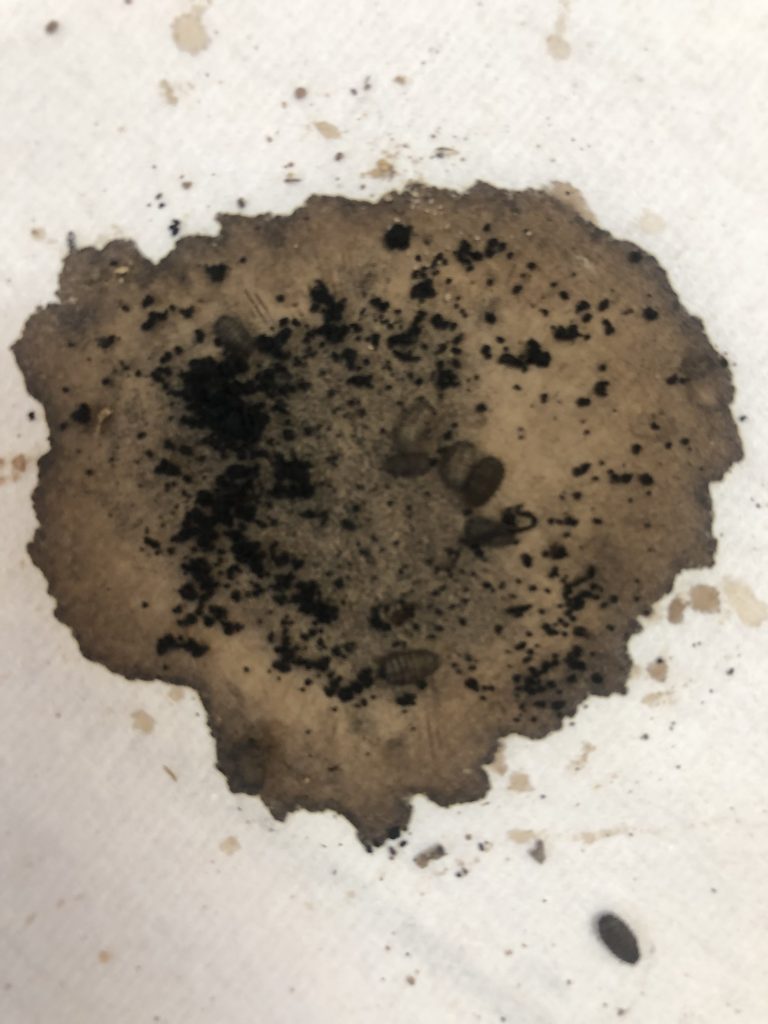
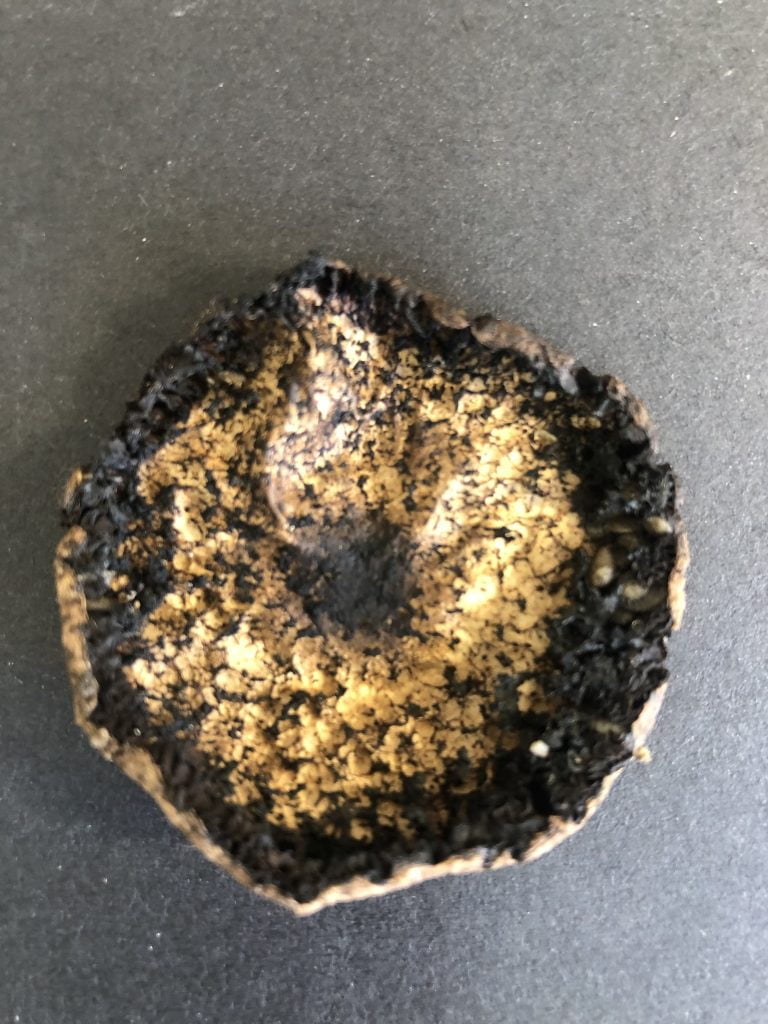
I prefer to base some of my understanding on Leonardo Da Vinci when he wrote his Treatise on Painting and described his discovery of accidental marks, and patterns. These things can be seen in wall stains, clouds, and dust and can be used as an arbitrary starting point for creating art. He also saw these things as being in constant flux. I feel that these exercises prepared me for less instructive work, and working on my own, which would include taking risks and challenging my own ideas.
I did play with my camera whilst photographing mushrooms I recently collecting, mostly to Id them, but by cutting and almost dissecting them, the photo’s can become interesting little narratives about fungi and marks they leave.
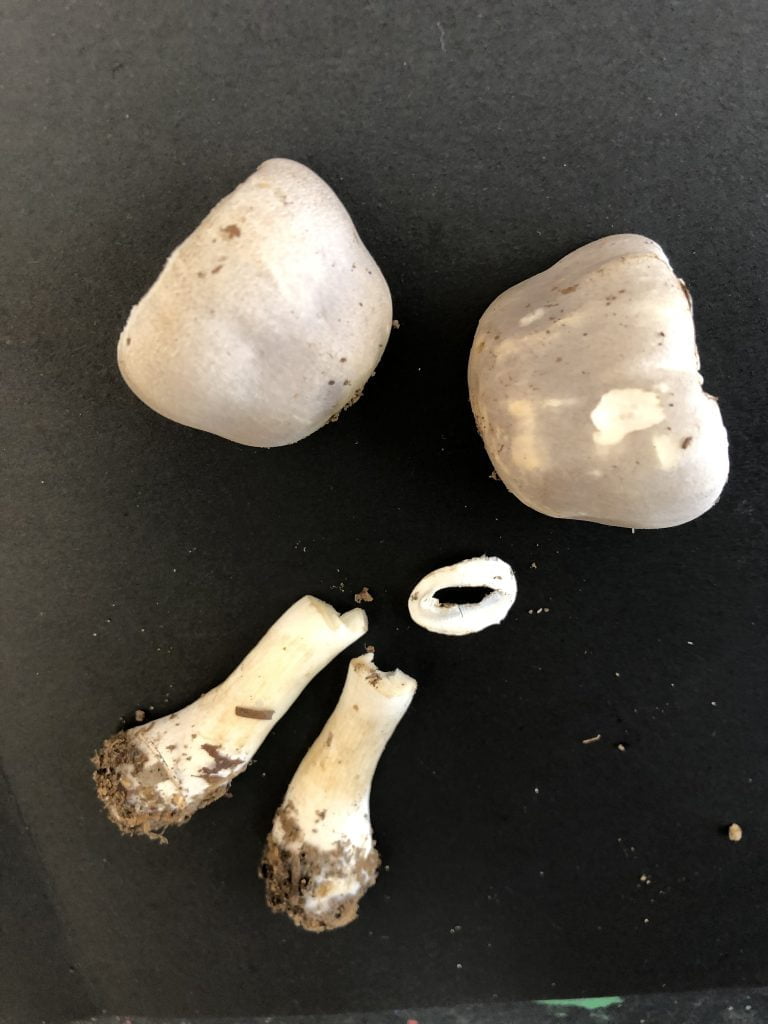
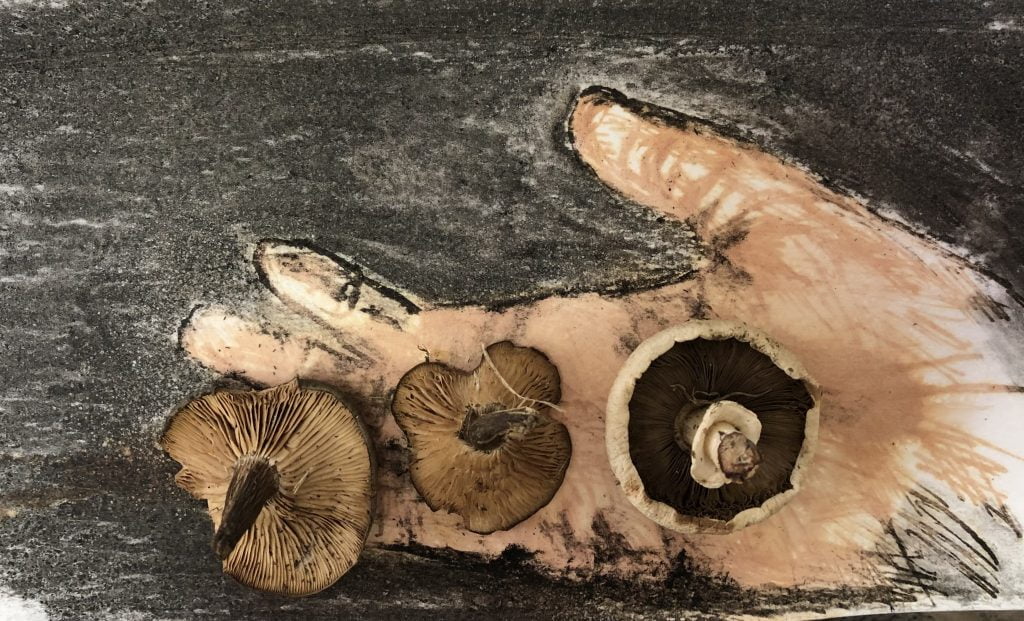
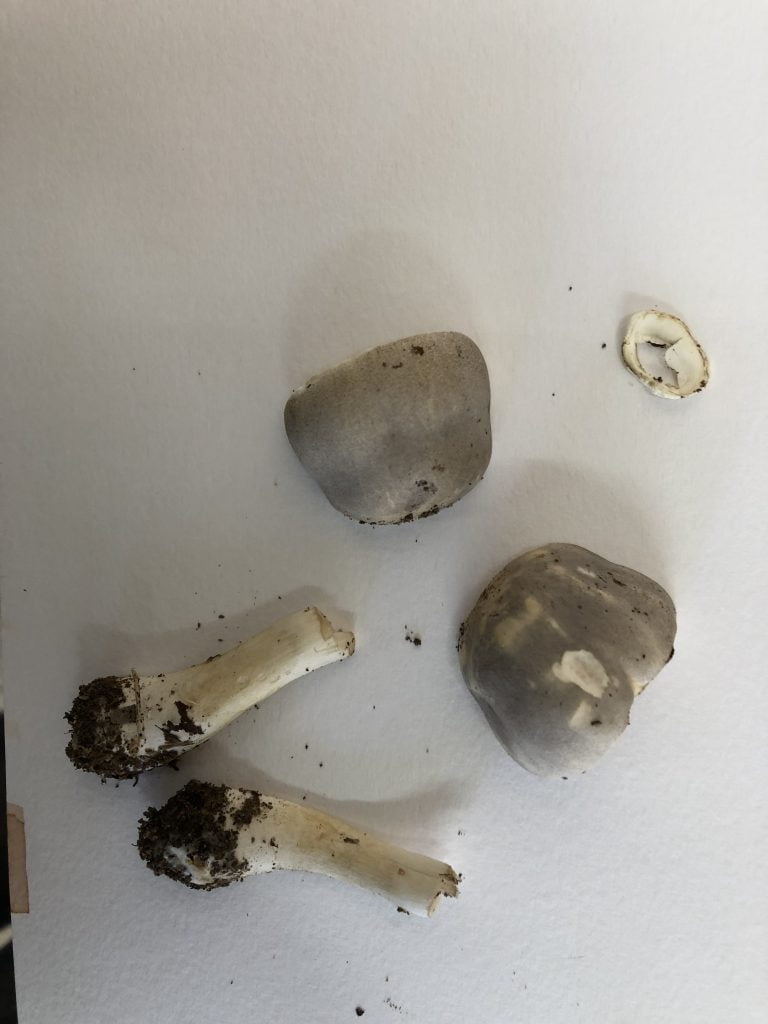

Thinking that kept me busy is the predictability of outcomes. I guess when one develops experimental drawings/work, the work cannot be precisely the same – external forces differ. I would say that if intentionality existed, one should be more sure of outcomes (vision). Chance asks to consider your responsibility and/or agency, as well as critical self-awareness. I do think pushing the limits can bring one to a place where you feel things fall together. I have a personal belief where I use the word ‘awe’ – but the idea is to always look at things fresh, that things should not become too familiar, and one can always find something new.
I want to mention the use of AI by artists and how machine learning could be seen as pushing boundaries by almost replacing the hand of the artist by using learning bots that are becoming increasingly better at learning. I do enjoy collaborating with other students and find the space open and inviting and pushing my ideas. I think this opens up generosity and reciprocity, and in a way, one acknowledges the agency of the other
One of my most significant learning was the feather installation and thinking about 3d form. I have visited my intentionality many times because it is so centred around my dealing with loss and death. I think the silence one experienced whilst making and exploring a new idea, almost like the unknown, became a good space for me to work in. I am now more inclined to agree that the work should have ‘stood’ on its own and that more effective use of shadows would make it more successful. I cannot help but go to words I have kept in my mind, as Philda Barlow said when she referred to her sculptures when exhibiting – she wanted the space between, above, and below. According to her, then, the work became energized within the space it was shown.
I went back to an article I read earlier in my studies, written by Rebecca Fortrum, called, On Not Knowing: how artists think. I understand that as an artist one wants to feel the unknown and have an encounter with your material, or idea, or making process and final work, presenting something of that experience. I am more inclined to experience my studio as a place where these encounters can happen, does happen. I know I have to push on, even on days that I feel I have no idea what I am doing in my studio, or I feel stuck. I think one of the more valuable learnings from this work was that I am again aware of having a reflective practice. I think this helps in how you voice narratives around your practice – the what, why, and how to stay significant in your artist statement.
Brown, Mark, 2016 Phylida Barlow: an artistic outsider who has finally come inside. The Guardian
://www.theguardian.com/artanddesign/2016/apr/28/phyllida-barlow-artist-success-2017-venice-biennale
Fortrum, Rebecca On Not Knowing: how artists think
Sharing of my BOW
I continue with a daily drawing practice. I started drawing feathers on 20 January 2023. For the last week, I have been drawing my hand, exploring the connections between care, and finding myself as a vessel for keeping and dealing with experiences. These drawings are available on my IG feed (@karenstanderart)
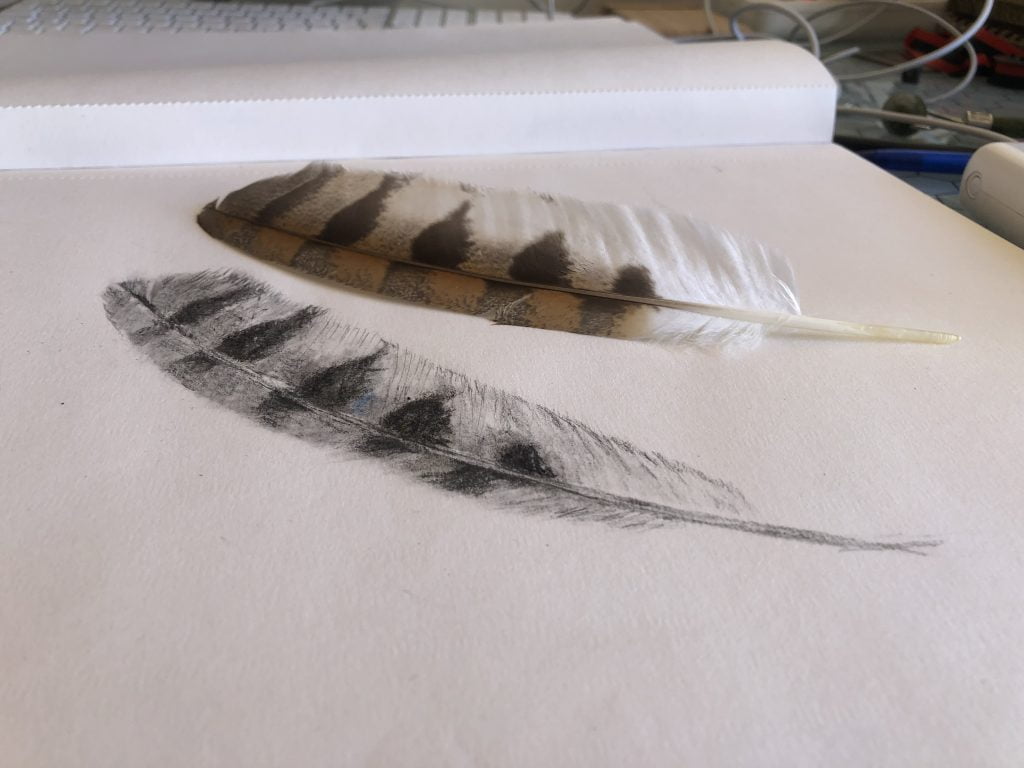
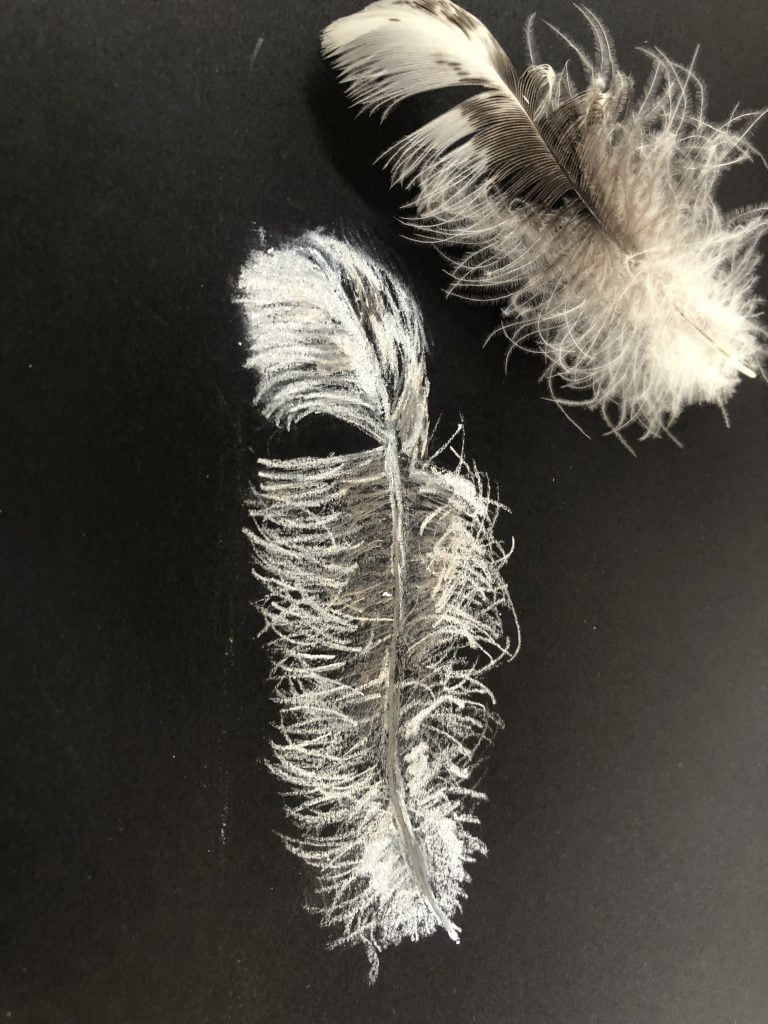
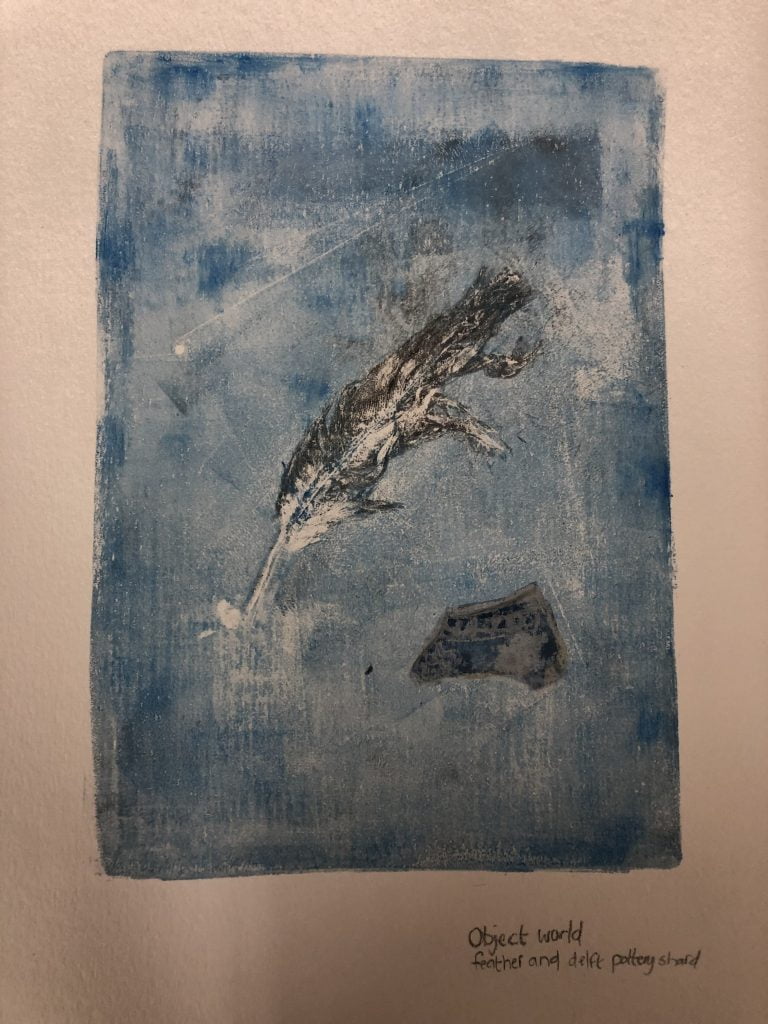
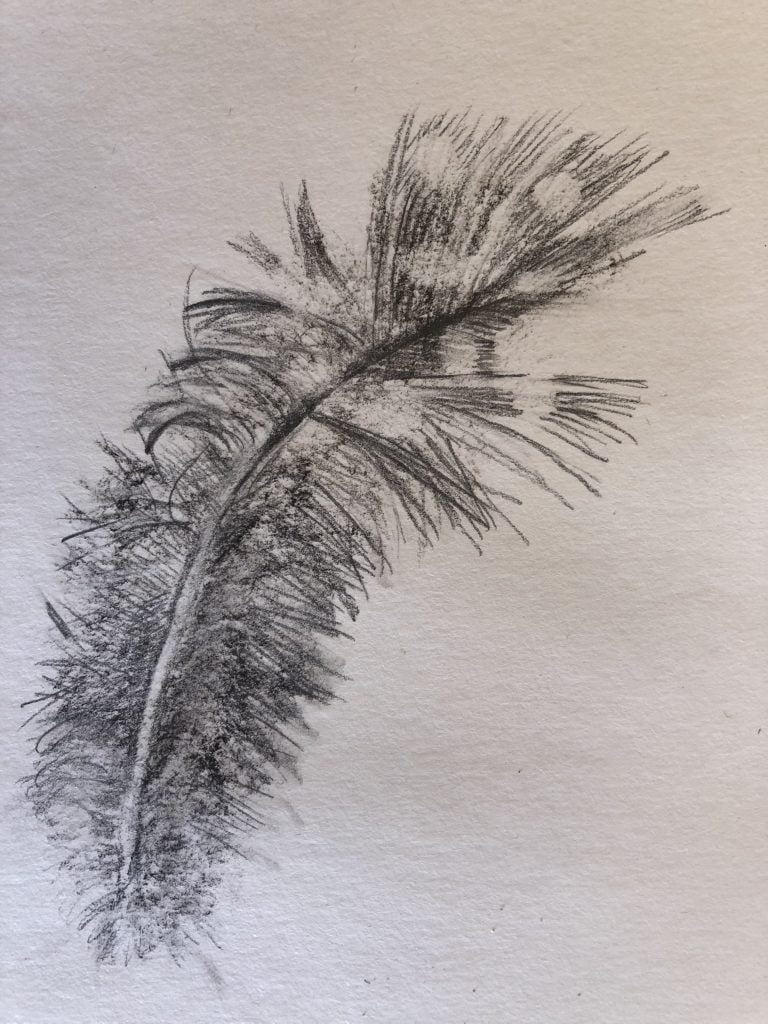
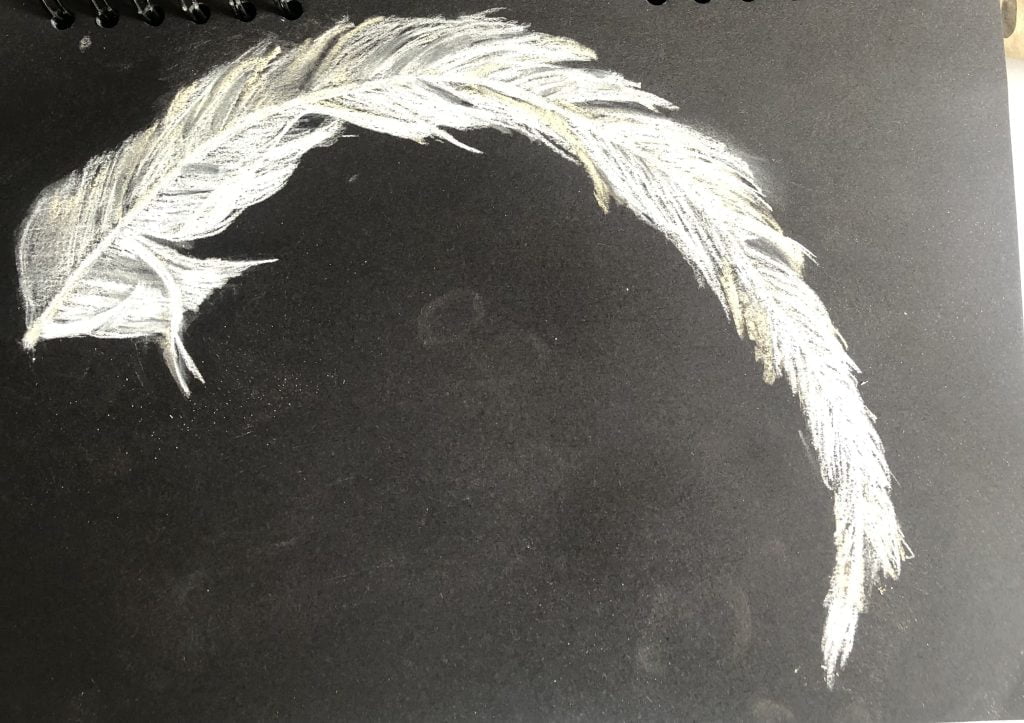
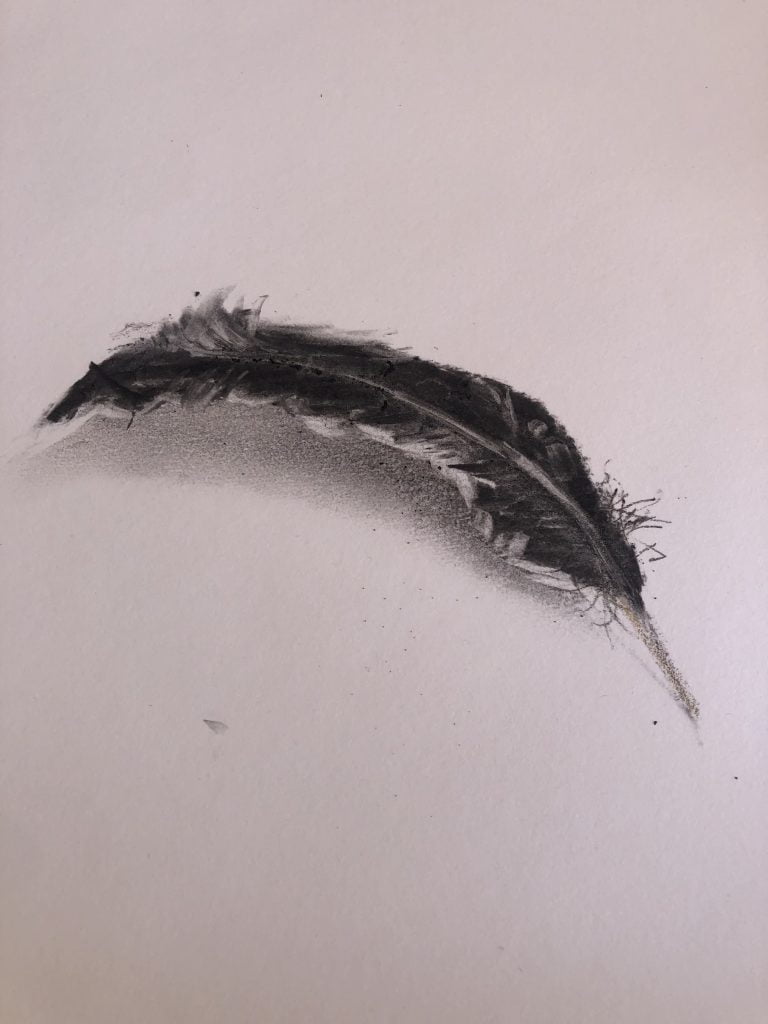
I explored charcoal, drawing pencils, watercolor paint, ink, and mushroom ink as drawing media and worked on vellum, watercolor paper, and white and black multimedia paper for these drawings. I continued a daily posting on IG. Below are some of the works I shared at a local art exhibition – they were placed behind perspex, and are standing here in my studio. I do like the idea of them ‘being finished’ and would not want to ‘archive’ them in a drawer, I do enjoy them here in the space.
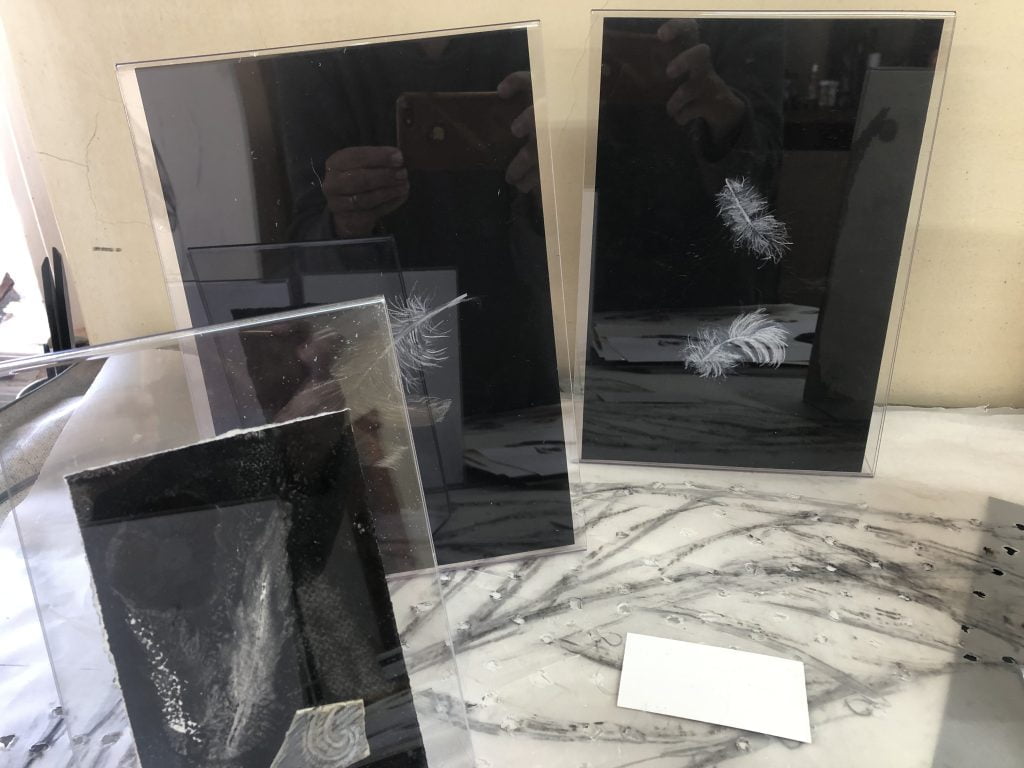
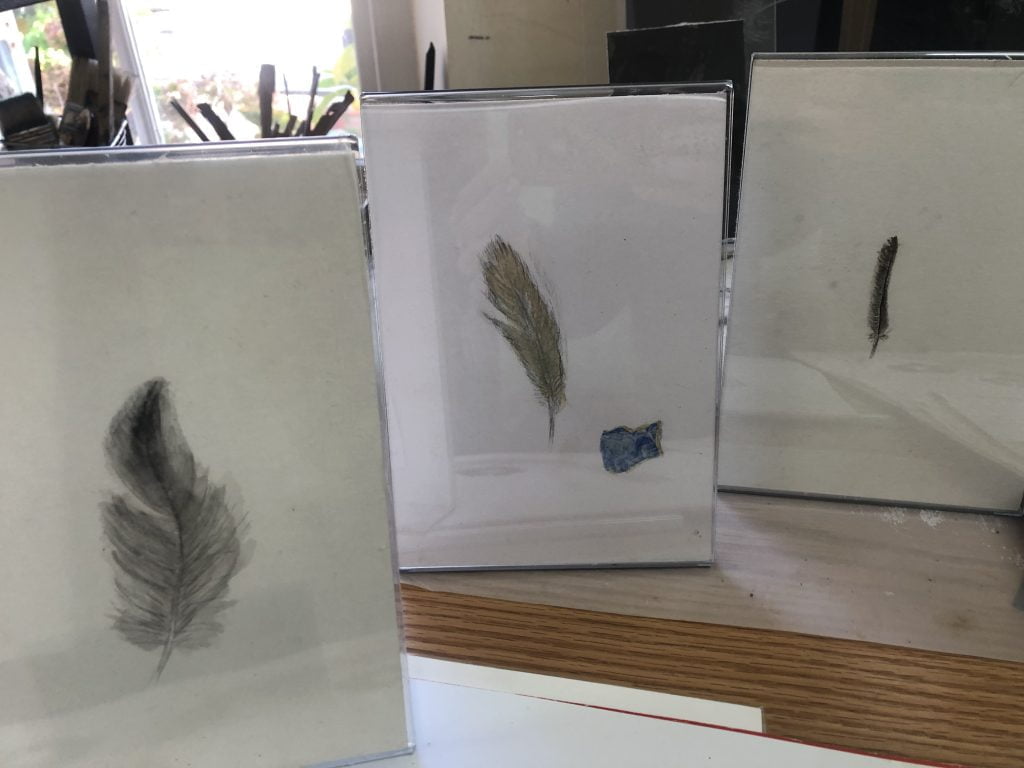
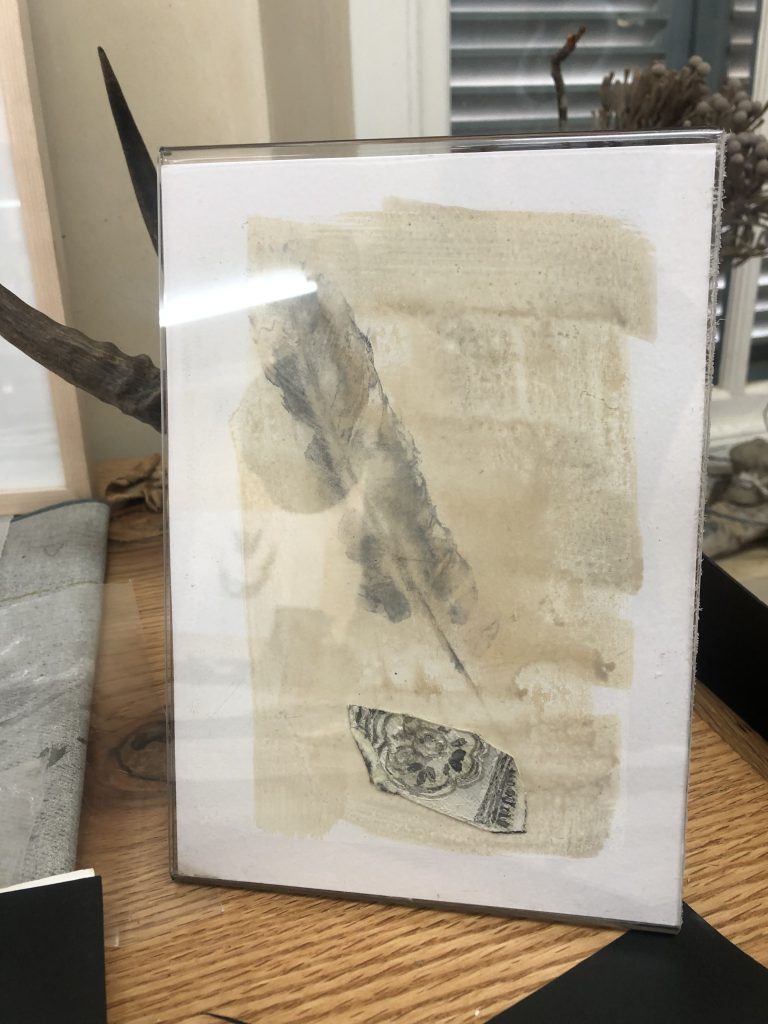
Hand drawings (most recent daily drawings, started Friday 28 April 2023 and committed till Friday 5 May 2023.
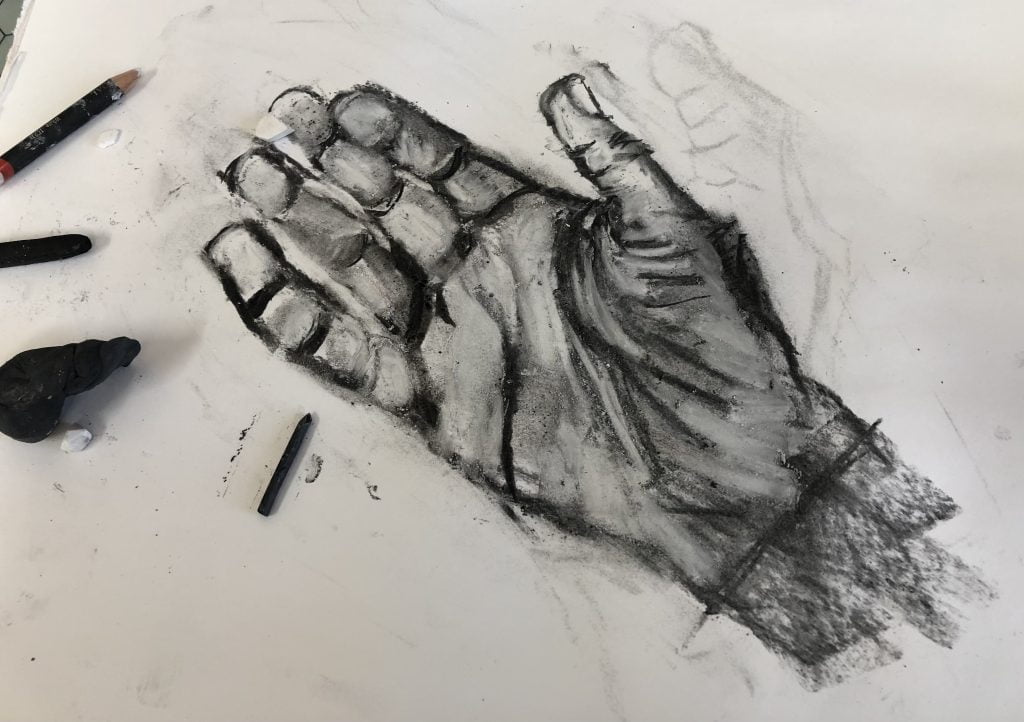
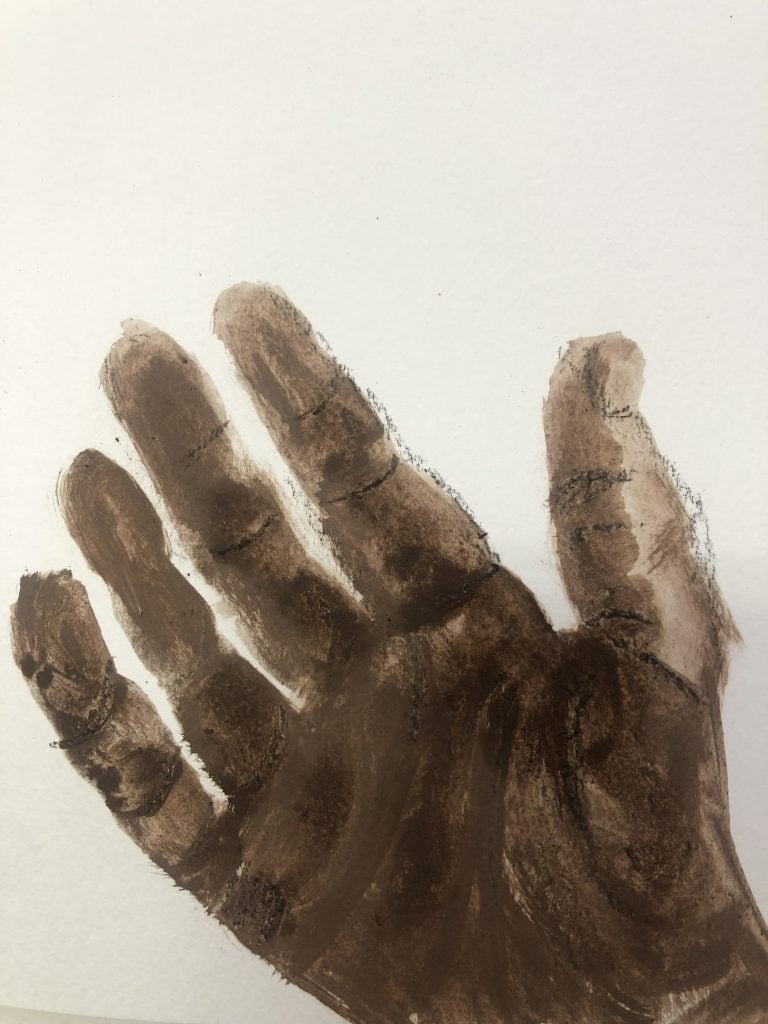
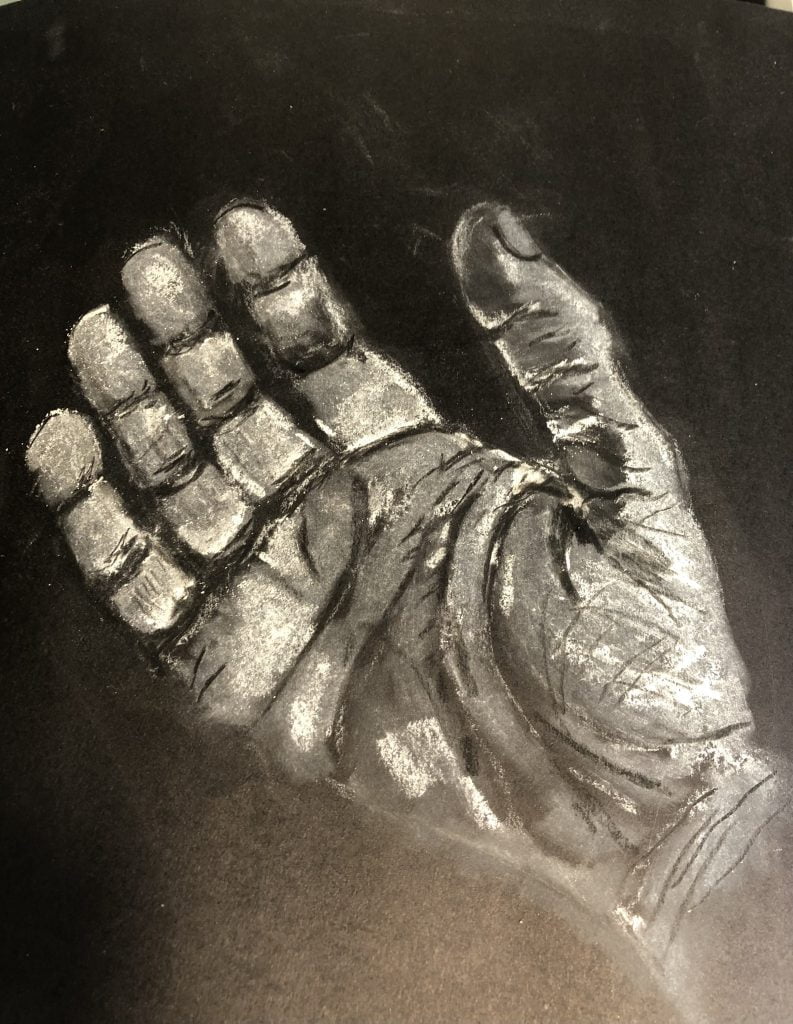
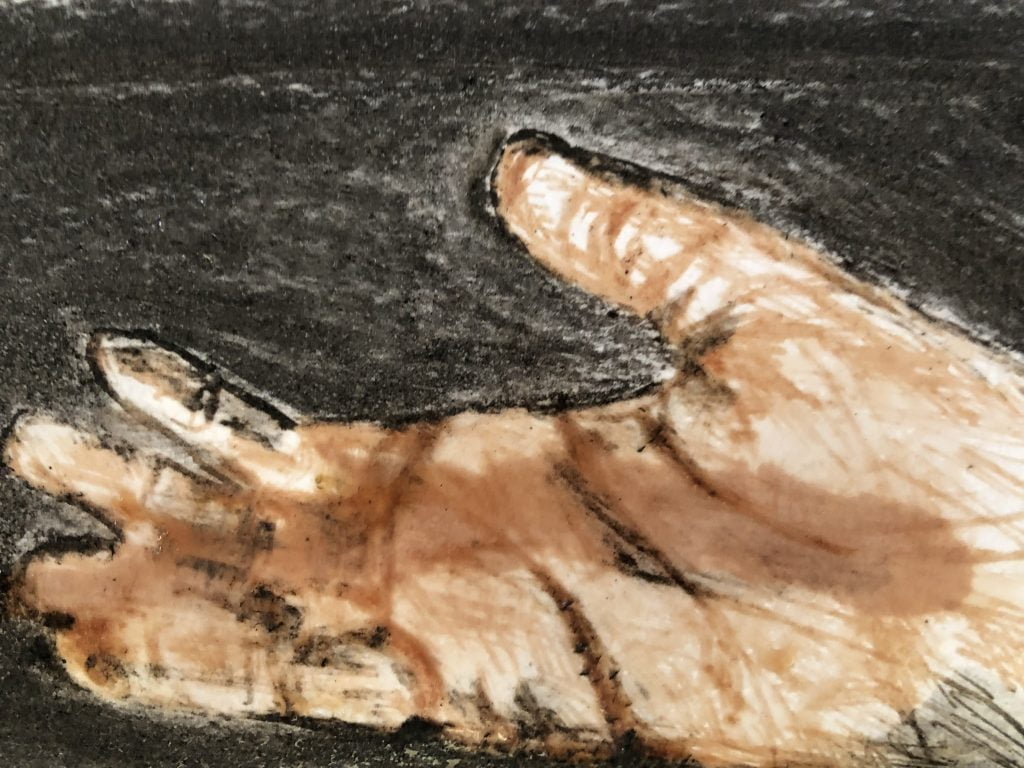
The last hand drawing had ink splashed onto it. I like how it shares something about care, almost a ‘bruised’ hand. It is clear to me that doing these drawings keeps me open to other influences and inspires my making.
Our season is changing, and Autumn starts with early rains, so mushrooms are available to forage. I started my first sculpture with mushrooms that would hopefully grow in it. I used a hand I made with bongo clay and placed an imprint that contained mushroom spore on it. I made an imprint of my hand in sepia powder, wetted it, and set a fresh foraged Field mushroom ( Agaricus campestris) on it, the spores dropping in my imprinted hand, and that was then folded into the clay sculptured hand, more paper (cellulose) added, sprayed with water, and closed up and placed in a dark box. It is essential to keep this incubation box moist and ensure the temperature is between 23 and 28 Celcius in order for mycelium to start to grow.
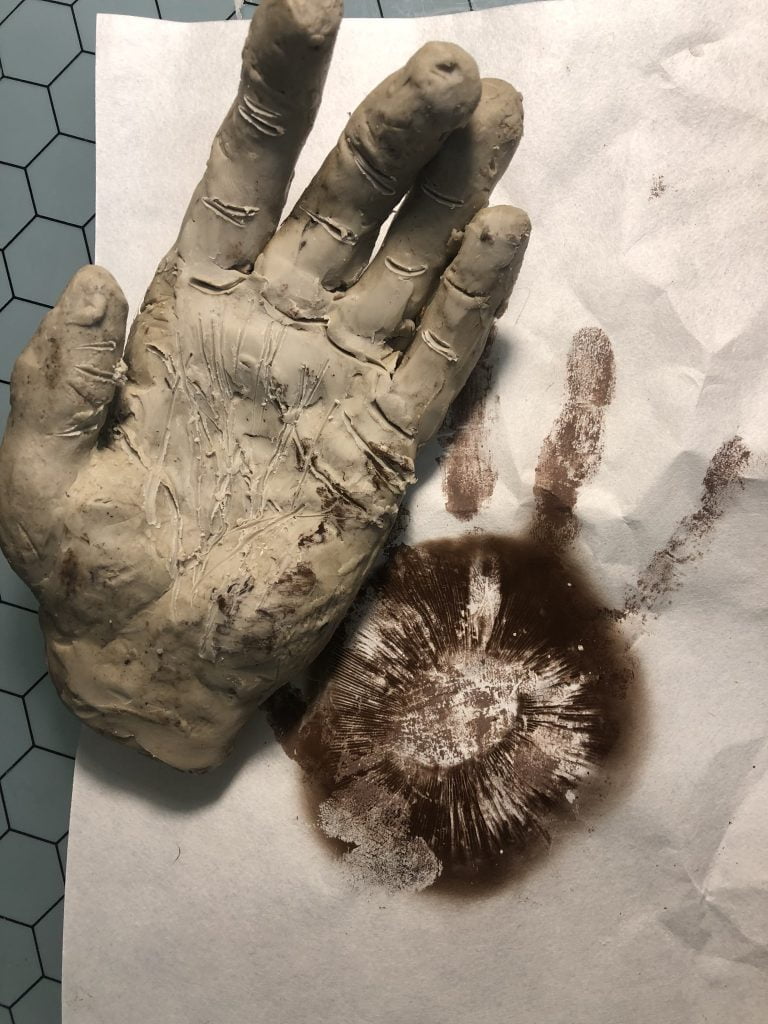
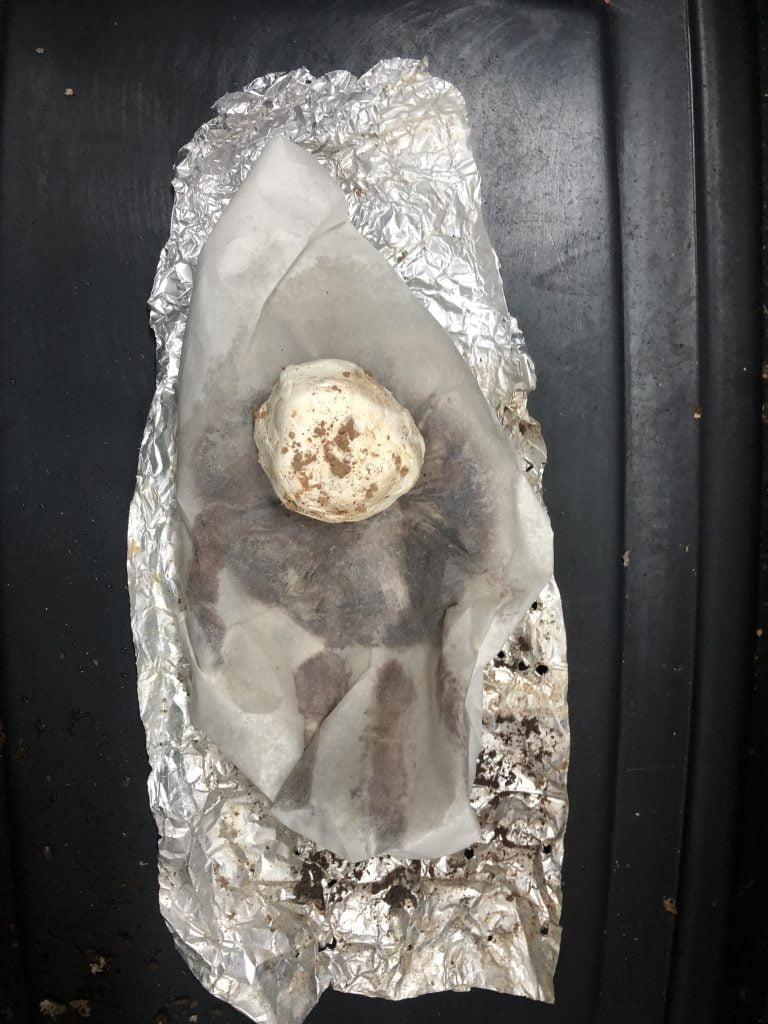
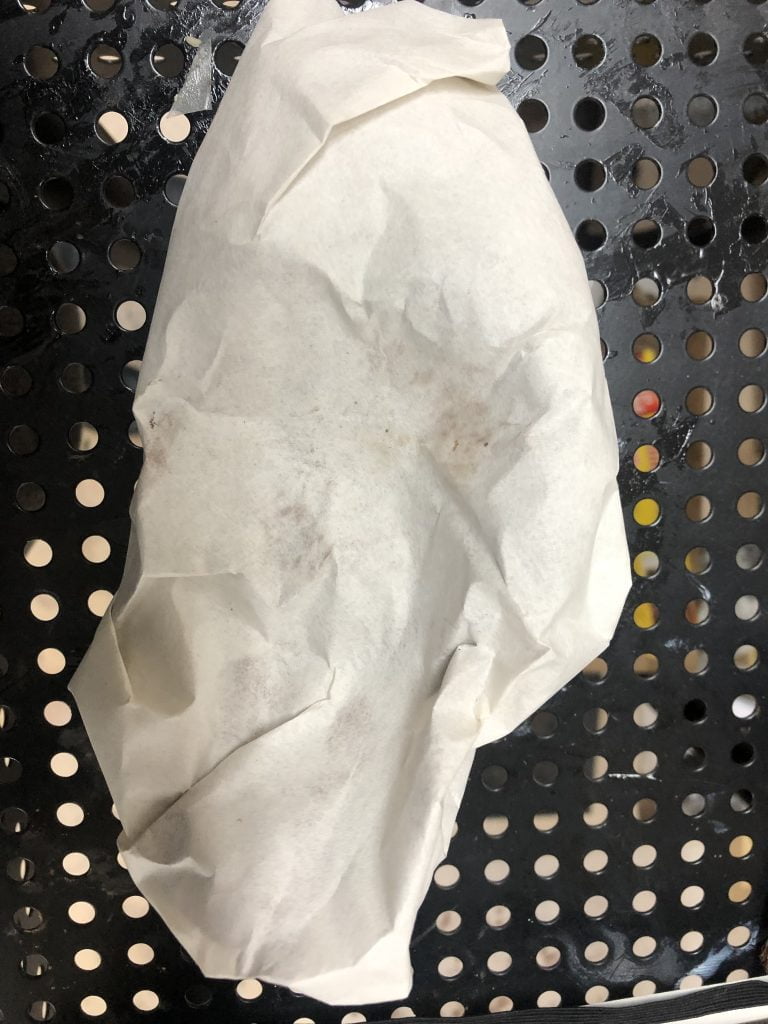
I did two bigger paintings, an oil painting as well as mixed media (acrylic and charcoal)
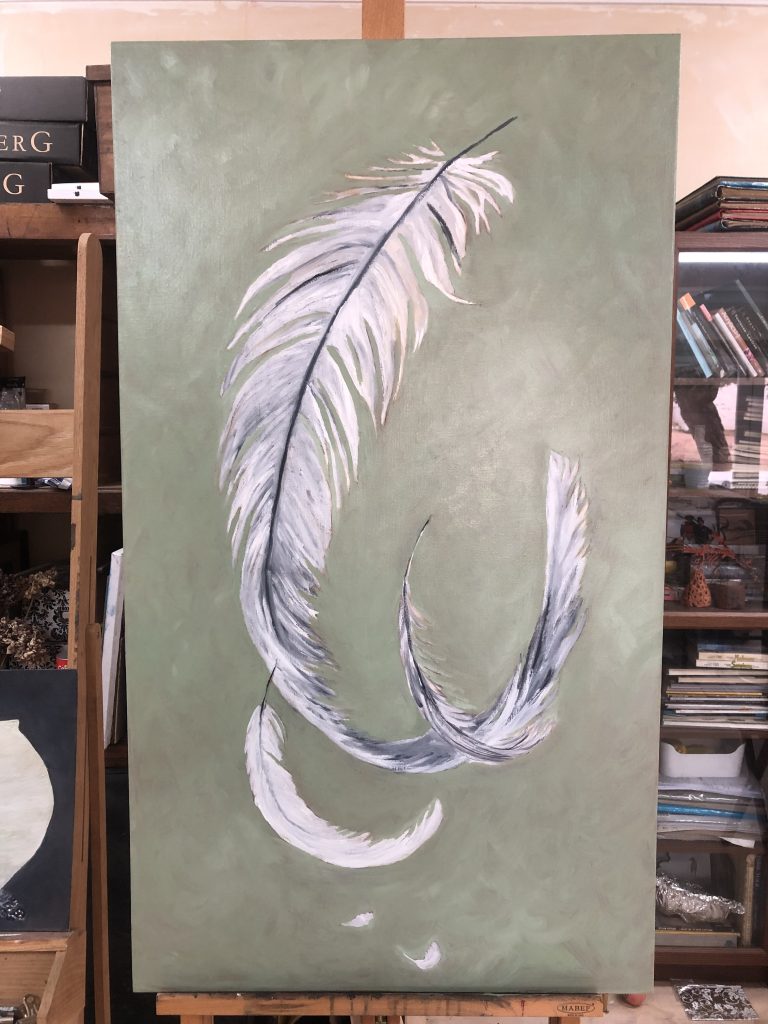
Updated Work Plan
I think it is important that my Body of Work has become more closely related to my personal situation, where dealing with loss, death, and connectedness became exposed as real life events that I am exploring with materials and thinking behind the making.
I used tree shaped ‘post it ‘ cards to share the work plan. I wrote a document to explain the process
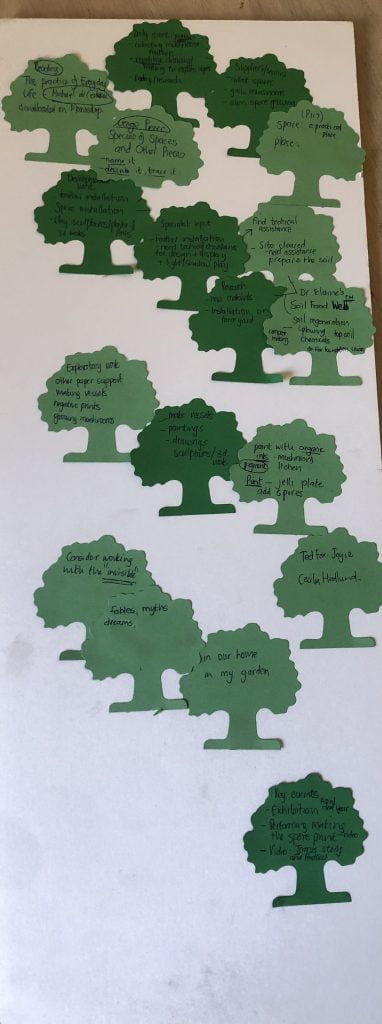
Updated work plan
My updated work plan reads from the top. The first tree indicated daily practices which are mostly repetitive and about exploring making, drawing, researching, caring, and maintaining. I downloaded books on Monoskop which I started reading and will reflect on in separate blogs. My mushroom spore growing can start soon, as the weather is cooling down. I have started collecting mushrooms on walks and added a feather collection to these walks as well.

Looking at developmental work I would like to continue the installation of feathers as well as add clay sculptures and a spore installation. I need specialist input in terms of hanging the installation as well as clearing the site. Reading Dr Elaine Ingham, Soil Food Web opened ideas around soil regeneration and compost making. I have a compost-making bin and have been able to regenerate an area next to the Involution deconstruction work ( Annette Holtkamp and Karen Stander 2022), with a few heaps of made compost during April 2023. I am considering doing an online foundation course with Dr. Elaine Ingham. After enquiring on the website I learned that the Foundation course will cost me $5000, which is unfortunately not within my current budget. I have decided to search other options and remember a program I watched a few years ago about soil regeneration in India, with Peter Proctor. ( One man one Planet, one cow) I found this on Youtube and will research more on his ideas about Biodynamic farming. I have a reference book written by him, on SCRIBD, Grasp the Nettle, and will refer to this as well. These ideas are very much based on what Rudolf Steiner taught in East Germany in the early 1924, namely that “Matter is never without Spirit, and Spirit never without Matter.”
The spore installation should be seen as a land art piece. I will prepare the area and then “sow’ mushroom spore. Part of the sowing will be to use spore prints which I have made on decomposable paper. I hope to create a circle with the ‘raw material’/ spores and have mushrooms grow in this circle.
Other exploratory works include using paper mache and feathers to make vessels, more paintings with organic inks and pigments, and the use of spore prints in these works. I explored printing by using a geli plate and made small-scale works. In a community project where I work, I am planning to motivate a group of children and create ‘wings’ with fabric and found materials, all based on local birds and our ecological environment. These ‘birds’ can then perform by doing movements outside and or around the big spore circle. I do like to think the myths/fables/stories can come to play. I explored work on the idea of Deodalus and Icarus and want to continue with it. My video graphing needs to develop. I have been looking into a app (Magix. com) where the use of video and sound could be creatively explored.
I will continue to research the work of other artists and have looked at the work of the list of artists my tutor suggested in the previous tutorial. I also enjoyed the work of the MA Students as suggested. Ted Fox Joyce’s work is about landscapes and the organic matter within, I do like the landscapes within landscapes and cells within cells as well as the hybrid forms he created. I presume he has a strong photography background. His way of showing the viewer how he observes and reflects on natural phenomena has been inspiring. I like ideas around coexisting with other natural matter and how we could consider closer bonds. The work made me aware of the importance of imagination and my own intuition when exploring my materials and subject.
